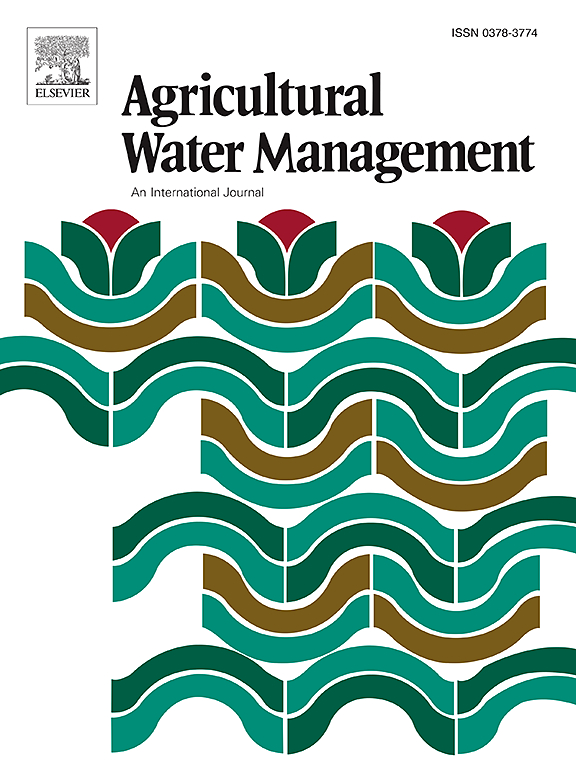社会网络塑造农民的非点源污染治理行为--中国丽江流域案例研究
IF 5.9
1区 农林科学
Q1 AGRONOMY
引用次数: 0
摘要
农业非点源(ANPS)污染日益威胁着中国的水生生态系统。粮食作物(GC)和经济作物(CC)间作加剧了景观破碎化,增加了污染控制的难度。作为非农用地污染的制造者和治理的受益者,农民的参与对于改善水环境至关重要。然而,在中国农村,与农民经济行为密切相关的社会网络对不同种植类型农民的 ANPS 污染治理行为的影响尚不明确。基于对丽江流域一个典型村庄 305 户农民的调查数据,我们构建了 GC 和 CC 农户的社会网络。通过引入网络嵌入理论,我们研究了社会网络如何影响农民的治理资源分配和集体行动。结合社会网络理论和技术接受模型(TAM),考虑认知的作用,提出了一个扩展的 TAM,以讨论农民的社会网络结构地位(SNSP)对其参与治理意愿(WP)的影响。结果显示,GC 农民的社会网络具有小世界特征(小世界商数=2.153),网络密度仅为 0.016,缺乏桥梁纽带,行动者之间的信任度较低。CC 农户网络的密度为 0.029,核心-外围结构更清晰(核心-外围指数=0.267),关键农户的桥接能力更强,平均间度中心度为 4.234%。CC 农户的网络具有多样化的联系,参与者之间的信任度较高。CC 农户的网络结构改善了信息传播,在获取资源和合作治理方面更为有效。结构方程模型显示,SNSP 对 GC 和 CC 农民的 WP 有积极影响,路径系数分别为 0.245 和 0.294。中介分析表明,GC 农民的 "有用性感知 "和 CC 农民的 "易用性感知 "在 SNSP 和 WP 之间的中介效应最大,分别为 20.9% 和 26.8%,凸显了认知的不同作用。社会网络对不同农民的治理行为有着不同的影响,考虑这些差异的策略可以提高治理效率。本文章由计算机程序翻译,如有差异,请以英文原文为准。
Social network shapes farmers’ non-point source pollution governance behavior – A case study in the Lijiang River Basin, China
Agricultural non-point source (ANPS) pollution increasingly threatens China’s aquatic ecosystems. Intercropping grain crops (GC) and cash crops (CC) increases landscape fragmentation, making pollution control harder. As producers of ANPS pollution and beneficiaries of its governance, farmers’ participation is crucial for improving water environments. However, the impact of social networks, closely related to farmers’ economic behavior in rural China, on different cropping types of farmers’ ANPS pollution governance behavior remains unclear. Based on survey data from 305 farmers in a typical village in the Lijiang River Basin, social networks of GC and CC farmers were constructed. By introducing network embedding theory, we examined how social networks influence governance resource allocation and collective action among farmers. Combining social network theory with technology acceptance model (TAM), an extended TAM was proposed to discuss the influence of farmers’ social network structural position (SNSP) on their willingness to participate in governance (WP), considering the role of cognition. Results showed that GC farmers’ social network have small-world characteristics (Small-world quotient=2.153) with a network density of only 0.016, lacking bridging ties and showing low trust among actors. CC farmers’ network had a density of 0.029, a clearer core-periphery structure (Core-periphery index=0.267), key farmers showed stronger bridging capabilities with average betweenness centrality of 4.234 %. CC farmers’ networks had diverse ties and higher trust among actors. CC farmers’ network structure improved information diffusion and is more effective in acquiring resources and collaborative governance. Structural equation modeling showed that SNSP positively affect WP for GC and CC farmers, with path coefficients of 0.245 and 0.294. Mediating analysis showed that GC farmers’ perceived usefulness and CC farmers’ perceived ease of use had the largest mediating effects between SNSP and WP, at 20.9 % and 26.8 %, highlighting cognition’s different roles. Social networks variably impact governance behavior among different farmers, and strategies considering these differences can enhance governance efficiency.
求助全文
通过发布文献求助,成功后即可免费获取论文全文。
去求助
来源期刊

Agricultural Water Management
农林科学-农艺学
CiteScore
12.10
自引率
14.90%
发文量
648
审稿时长
4.9 months
期刊介绍:
Agricultural Water Management publishes papers of international significance relating to the science, economics, and policy of agricultural water management. In all cases, manuscripts must address implications and provide insight regarding agricultural water management.
 求助内容:
求助内容: 应助结果提醒方式:
应助结果提醒方式:


